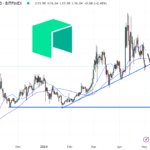The Indian Rupee (INR) gained momentum on Friday as the US Dollar (USD) weakened. This was fueled by cautious comments from Federal Reserve Chair Jerome Powell which exerted selling pressure on the USD. The positive sentiment in the Indian equity markets and inflow of foreign capital also supported the INR. Investors are keeping an eye on the US ISM Services PMI and employment data for April, as any unexpected weakness in the labor market could lead to a rate cut from the Federal Reserve, further impacting the Greenback.
The HSBC final India Manufacturing Purchasing Managers’ Index (PMI) for April declined slightly from March, but still remains strong. The RBI’s FX intervention in February was the lowest in six months, indicating reduced pressure on the Indian Rupee compared to the previous quarter. QuantEco Research economist Vivek Kumar noted that pressures on the INR eased in the first quarter of the year. Additionally, the Organisation for Economic Co-operation and Development (OECD) raised its growth forecast for India for 2024-25 by 40 basis points. In the US, Initial Jobless Claims for April outperformed expectations, and the Federal Reserve left interest rates unchanged while signaling a wait-and-see approach.
In terms of technical analysis, the bullish outlook for USD/INR remains on a daily timeframe as the pair forms an ascending triangle. The key support levels to watch are the 100-day Exponential Moving Average (EMA) and the lower limit of the ascending triangle. A break below these levels could signal further downward movement for the pair. On the upside, a high of May 1 serves as a resistance level, with a potential breakout leading to a rally towards the 84.00 psychological round mark. The 14-day Relative Strength Index (RSI) suggests further consolidation in the short term.
The Indian Rupee is influenced by various external factors such as the price of Crude Oil, the value of the US Dollar, and foreign investment flows. The Reserve Bank of India (RBI) actively intervenes in forex markets to maintain exchange rate stability and control inflation through interest rate adjustments. Macroeconomic factors like inflation, interest rates, GDP growth, trade balances, and foreign investment inflows also impact the Rupee’s value. Higher inflation can have both positive and negative effects on the currency, depending on other factors at play.
The table shows the percentage change of the US Dollar against major currencies, with the USD being weakest against the Pound Sterling. The heat map provides a visual representation of the percentage changes of major currencies against each other. Overall, the Indian Rupee’s strength and stability in the midst of global economic uncertainties highlight the positive outlook for the currency in the near term. Investors and market players will continue to monitor key economic data releases and external developments to gauge the Rupee’s performance in the coming days.










